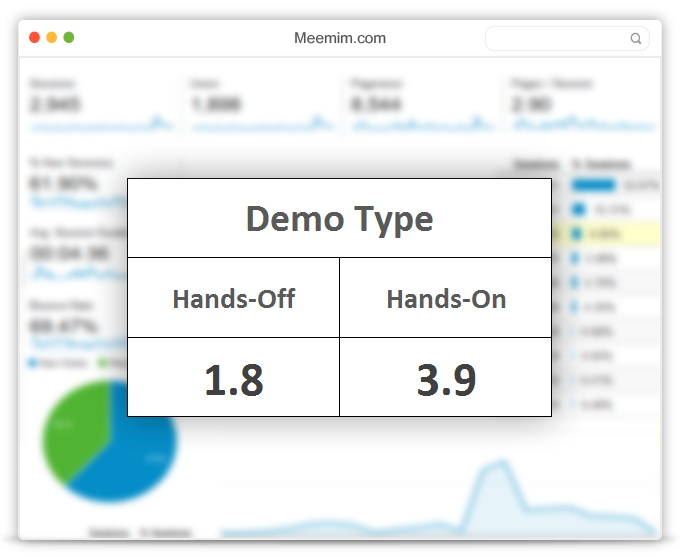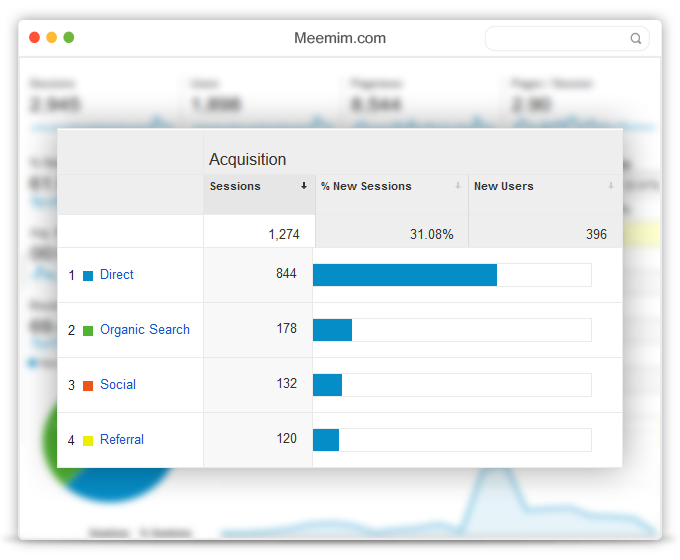
Last week, we opened up the Meemim platform for the public beta. Our target was to sign up approximately 125 companies who had expressed interest in our collaboration platform. We were looking forward to adding their numbers to our books over the course of a week. Instead, we on-boarded over 500 new clients in less than a day.
The experience blew us away.

Admittedly, the release didn’t go as smoothly as it might have. We underestimated the demand, and our sign-up system — which is distinct from our core platform — went down under the weight of all the processing it had to do. Luckily, our infrastructure allowed us to throw more resources at the problem (thank you, Microsoft Azure), and we recovered swiftly.
Without additional context, it sounds like a fairytale. But the path to that day was anything but — long, steep, and occasionally brutal. Here’s how we got there.
Traction troubles
Initially, Meemim was fraught with traction issues. By December 2015, we had signed up 25 pilot users, mostly from personal connections. In the following five months, we labored to grow the count by just 11 more.
Every last sign-up was an exercise in frustration. Having assumed that the product needed C-suite buy-in, we invested a lot of sweat and time trying to convince executives of its value. Countless calls, demos, and persuasive explanations later, we had hardly advanced at all.
By then, our startup company had been so worn down by our fruitless efforts that we were on the verge of calling it quits.
A pivot
Instead, we took a step back. There had to be a logical explanation for the difficulties we were suffering with a process that, by all accounts, should have been straightforward. We re-evaluated our approach and defined a new path which, just four months later, led us to 500 sign-ups. Here’s what we did.
Step 1 – Identify where we failed
Our examination of our struggles revealed the following stumbling blocks.
- A disconnect between the product (which is fantastic) and people’s apparent excitement about it (which was slight). That led us to think that:
- The messaging was completely off and/or
- We had targeted the wrong people and/or
- Our product focus was wrong
- Lukewarm messaging. Yes, messaging was an issue. Comparing the reception of our product pitch (verbal presentation supplemented by a PowerPoint deck) with the product demo (visual and hands-on) revealed a day-and-night difference.
We measured our product perception using the simple metrics – perceived excitement and number of questions received during hands-on and hands-off demos on the one to five scale, where one is bored and five is super-excited. The results:

Our conclusion: When we talked about our product, we did so in terms that, apparently, didn’t mean anything to others. They were able to understand its benefits superficially but failed to appreciate them at a level powerful enough to motivate them to sign up.
- An inflexible message distribution channel. We had put all of our eggs (well, most of them) in our blog basket, confident it would generate the traffic we needed. Not only did we neglect to develop a sound strategy for promoting our blogs, we also failed to cultivate an alternative channel.

- Target audience. We targeted decision-makers within companies — C-level officers. Then it dawned on us that they are not the group who use our product, and that they, therefore, apply a different set of criteria to evaluating it.
- Lastly, the product focus. Our assumption that we needed to target decision-makers led us to design the product around their expressed needs. Thus, Meemim was built initially as a “walled garden” to keep collaboration and information inside. We underestimated the fact that, in the age of collaboration, sharing is key.
Step 2 – Ask for help… real human help
In the digital age, the value of conventional human contact can be underrated. We realized that, without hands-on experience, it’s hard to organize the disparate bursts of digital advice into a meaningful strategy. So we talked to those with experience.
- Conversations, especially with a couple of marketing consultants, helped us improve our messaging. The content of our revised message was essentially the same, but we slightly modified the style in which we delivered it. The reward for our efforts? People were more receptive.
- It was suggested to us that we revisit our marketing channels. Up until then, we’d mostly neglected social media, failing to see any value in it. But this interaction revealed something else. By talking to none other than a recent university grad, we found ourselves freshly enlightened as to what social media might do for us. Within three months, our social media activities paid off, and we started generating a significant portion of site traffic from it.
- We were similarly educated on the right way to build contact lists. Rather than approach people directly with point-blank “asks,” as we’d been doing, without success, we learned the secret to nurturing contacts and being less brazen with our efforts.
Step 3 – Start relationship building
Nobody amasses a collection of quality contacts overnight. We needed to establish a foundation of trust before imagining that anyone might feel disposed to receive our message (and don’t think that buying Twitter followers is the same as having Twitter followers). In the end, we spent four months improving our social media and contact lists before the public beta launch. Throughout that time, we made an effort to keep existing contacts warm, since people’s memories fade fast.
Step 4 – Explore free things available to you
Hosting was the second-biggest expense for us after development. Every sign-up meant greater monthly expenses for us. With limited funding, offering the system for free to a large user base was impossible, so we explored our options.
We got lucky with BizSpark, the Microsoft program that gives startups (as long as they’re less than five years old and make less than $1M a year) three years of free Azure stuff – infrastructure, services, tech support, etc. Microsoft’s acceptance of the program eliminated the issue of hosting which, in turn, allowed us to pivot from selling to C-level executives to giving the product to those who use it. This didn’t generate revenue right away, but it did miracles for the user base growth.
Programs similar to BizSpark are available from other providers. Apply for them mindfully, taking care to meet their qualifications. Better yet, build relationships with program advisors, and consult with those who have already signed up for them to increase your chance of acceptance.
Step 5 – Focus on product users, not product buyers
Once we understood that we were running after the wrong crowd, we pivoted our customer focus. Instead of chasing buyers of our product, we redesigned everything around making it easier for people to sign up and use it. Having freed them from the need to ask their CIO’s permission, we were off to the races.
Step 6 – Make every event an event
When it’s time to launch the results of your private labor to the public, be sure to make it a splashy affair. This is eminently preferable to spreading the occasion over a stretch of time. Here’s what we did to make a big noise.
- Delayed on-boarding new clients, building a pipeline of interested parties instead.
- Started preparing clients for the launch three months in advance. Our goal was to get as many companies to sign up in one day as possible.
- Fanned the flames of interest at every turn, engaging internal resources wherever possible. Then, a few weeks before the big day, we blasted emails to some 7,000 prospects, telling them it was the day to sign up.
- Dedicated internal human resources to handle sign-up volumes and provide sign-up assistance.
- Retained a spicy detail, namely, the hiccup in the sign-up process. This unexpected glitch gave us a juicy story to put at the center of the launch.
The one big mistake we made was involving qualified media and PR people too late. It’s never too early to begin planning your public relations and media strategy. If I could change one thing about the release, I’d have PR consultants working with us for a couple of months before the release.
Onwards and upwards
We’ve made tons of avoidable mistakes, but embracing all of this enlightenment helped us pull off a pretty nifty trick: Jumping from on-boarding one client every other week to having over 500 clients in a single day.
Get the TNW newsletter
Get the most important tech news in your inbox each week.




